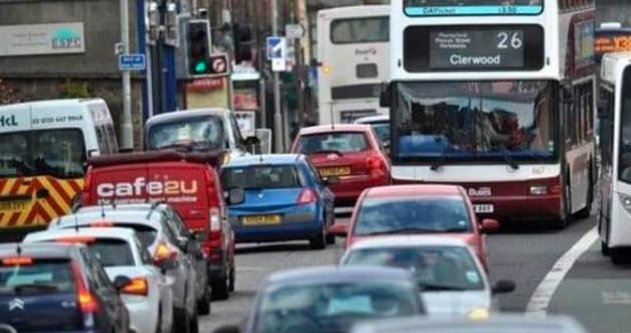Bus and coach operators across Scotland are pressing politicians to fight the country’s severe traffic jams. This push comes from a fresh manifesto released by the Confederation of Passenger Transport on October 27, 2025, right before the 2026 Holyrood election, aiming to make public transport faster and more reliable.
Manifesto Launch Highlights Urgent Needs
The Confederation of Passenger Transport unveiled its new plan, called Shaping the Future of Bus and Coach in Scotland, during a conference in Edinburgh. Leaders from the industry gathered to stress how bad roads slow down daily commutes and hurt the economy. They point out that buses handle about 900,000 trips each day, but congestion makes them crawl at an average speed of just 11.3 miles per hour. This slow pace frustrates riders and operators alike, leading to fewer people choosing buses over cars.
Experts in the sector say the time is right for change with elections on the horizon. The manifesto challenges all political parties to back bold steps for better roads and funding. Attendees at the event shared stories of how traffic delays affect everything from school runs to business deliveries.
One operator noted that without action, Scotland risks falling behind other parts of the UK in transport efficiency. The group hopes this document will spark real debates in Parliament.

The Toll of Traffic Jams on Daily Life
Chronic congestion turns simple trips into long ordeals for many Scots. In cities like Glasgow and Edinburgh, buses often get stuck behind cars, adding hours to journeys that should take minutes. Riders complain about unreliable schedules, which make planning a day tough, especially for workers and families.
This issue hits rural areas hard too, where buses are the main link to jobs and services. Recent talks on social media show frustration building, with people sharing tales of missed appointments and extra stress from slow travel. One common gripe is how roadworks and poor planning worsen the problem during peak hours.
Beyond delays, congestion raises pollution levels and fuel costs for operators. It also discourages new riders, keeping more cars on the road and creating a vicious cycle.
Core Demands from the Industry
The manifesto lays out clear steps to fix these problems. Operators want politicians to focus on road upgrades and smarter funding to support bus services.
Here are some key proposals:
- Build more dedicated bus lanes to let vehicles bypass car traffic.
- Reform funding so local councils get steady support for routes.
- Invest in technology like real-time tracking to help riders plan better.
- Review free travel rules to ensure they do not overload peak times.
These ideas aim to make buses quicker and more appealing. Industry leaders believe acting now could cut journey times by up to 20 percent in busy spots.
To show the scale of the challenge, consider this table comparing bus speeds in Scotland to other areas:
| Location | Average Bus Speed (mph) | Daily Trips Served |
|---|---|---|
| Scotland Overall | 11.3 | 900,000 |
| Edinburgh | 12.5 | 300,000 |
| Glasgow | 10.8 | 250,000 |
| London (for comparison) | 8.5 | 2,000,000 |
Data highlights how Scotland lags, with slower speeds than even crowded London buses. Upgrades could bring Scotland in line with best practices elsewhere.
Boosting Economy and Environment Through Better Buses
Fixing congestion could unlock big gains for Scotland’s economy. Faster buses mean workers arrive on time, boosting productivity and reducing business losses from delays. The sector employs thousands and supports tourism, with coaches carrying visitors to scenic spots without the hassle of driving.
On the green side, more reliable public transport cuts car use and emissions. Scotland aims for net zero by 2045, and efficient buses play a key role. Recent government moves, like the 20 million pounds for bus infrastructure this year, show promise but fall short of what operators need.
Ties to other events, such as strikes in nearby regions, underline the urgency. Better services could prevent disruptions and keep people moving smoothly.
Path Forward to the 2026 Elections
As the Holyrood vote nears, the manifesto puts pressure on parties to commit to transport reforms. Voters in places like Aberdeen and Inverness, where rural routes suffer most, will watch closely. Operators urge cross-party support to avoid more years of gridlock.
This call aligns with wider pushes for sustainable travel in Scotland. By addressing these issues, leaders can build a system that serves everyone better.
Share your thoughts on Scotland’s bus woes in the comments below. What changes would you like to see, and how can we push politicians to act?


















